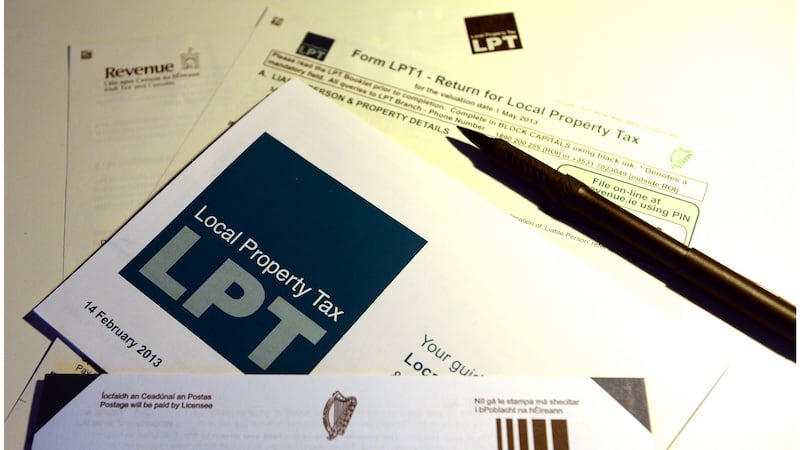The Government is not short of advice or warnings on the public finances. The Irish Fiscal Advisory Council (Ifac) cautioned this week that the plans for Budget 2022 outlined by the Government were "at the limit of what is prudent" and that tough choices lay ahead.
It said there was a one in four chance of the national debt moving on to an unsustainable trajectory in the years ahead.
The Central Bank governor, Gabriel Makhlouf, also warned recently that tax revenue will need to be raised in the years ahead to pay for higher spending. So how much risk is Ireland set to run with the public finances and what could push things off the rails?

1. The background: Policy is changing.
Minister for Finance Paschal Donohoe signalled in the Summer Economic Statement that budget policy over the next few years would involve more spending and borrowing than previously estimated.
In some ways this was a recognition of reality – previous spending forecasts were not realistic. But it has also underlined the challenges facing the public finances after the pandemic – and the questions Ireland will face.
On the basis of the updated forecasts, the Government is now forecasting that the budget will still be in deficit to the tune of around 1.5 per cent of GDP( or close to 3 per cent of GNI*, the measure which attempts to adjust for multinational distortions ) in 2025, rather than the previous target of being in balance.
In turn this would lead to a slower reduction in the ratio of debt to national output, the key measure of debt sustainability, which would fall from a high this year of about 112 per cent to around 106/107 per cent of GNI* by the middle of the decade, rather than falling to 100 per cent as previously estimated.
Ireland’s high debt level – a legacy of the financial crash and massive Covid-19 spending – is key to this argument.
Fortunately, as interest rates have been so low, the cost of servicing the national debt has actually fallen over the last few years, even as borrowing rose. But as the ECB starts to gradually withdraw supports – it has effectively been buying as much debt as the Government has issued – Ireland will have to retain the confidence of private lenders. And so a credible strategy for the public finances is important.

2. Decisions delayed
The political party conferences have been awash with promises of higher spending, more investment, earlier retirement ages and more spending on welfare.
On the flip side, we know some more revenue will be raised from carbon tax on budget day and a bit extra will come from the local property tax, used to fund local councils. But the amounts will be modest. Fine Gael is also pushing for income tax relief, probably an increase in the income level for the higher 40 per cent tax rate.
How will this all be paid for ? Higher employers’ PRSI is likely to be on the cards in the years ahead – Sinn Féin has included this it its plans, as well as lower tax relief on “ gold-plated pensions.”
But it is clear that politically, reducing the big deficit of the Covid-19 period is going to be a challenge. As Goodbody stockbroker economist Dermot O’Leary put it this week in a note to clients: “As ever, it is a lot more difficult for politicians to take money away from an electorate than it is to give it.”
Dr Eddie Casey, chief economist of IFAC, told the Irish Times Business Podcast this week that the council's view was that the extra spending during the Covid-19 crisis was exactly the right thing to do and an unusual example in Ireland of what is called counter-cyclical fiscal policy – in other words loosening the purse strings in a crisis to try to support the economy, rather than being forced into " austerity" cutbacks.
But the flip side of this, he pointed out, was cutting borrowing and the debt burden when times were good. And the council is concerned that looking ahead there is little clarity on how this will happen.
The council’s view is that the Government needs to prioritise – rather than planning to cut taxes, increase spending and push up investment massively all at the same time.
In particular it has criticised a big increase in non-Covid spending in last year’s budget, which it said amounted to at least €5.4 billion and will reduce room for manoeuvre in the years ahead.
This analysis was echoed in a recent Central Bank paper called An Analysis of Medium-Term Risks to the Public Finances. To give Ireland more leeway if problems hit in the years ahead,it recommended that new revenues be raised to pay for new spending commitments.
The Government has set up a commission on tax and welfare to look at these issues.
However it is not due to report until next summer. So will Budget 2023 be the one where some chickens start to come home to roost, particularly as the risks to corporate tax revenue then should be clearer?

3. What is the risk?
Let’s start with the good news. Ifac believes the Government may have underestimated growth in the next few years, by not fully accounting for the likely recovery of the domestic economy.
Stronger growth would mean higher taxes – and a bit more room for manoeuvre. Borrowing for this year is well below the official forecast of €20.4 billion. It is the following years when questions emerge.
Both Ifac and the Central Bank have tried to calibrate the risks – and look at where the danger might come from. A key factor in both of the forecasts is the big increase in non-Covid spending last year and the difficulty of winding back the emergency Covid spending.
The Government has, the Ifac report writes, already spend much of the fruits of growth in the next few years via decisions already made.On Ifac’s calculations, the Government has already committed more to future budgets than its own new rule on spending would allow for.
The Central Bank analysis is based on a looking at a range of possible dangers – spending running ahead of target, a setback to the international economy hitting growth here and a fall in corporate tax revenues beyond what is currently pencilled in to exchequer forecasts.
Past experience shows that spending tends to run ahead of target, it points out, saying that total gross spending was rising at an annual rate of 7 per cent in 2018 and 2019, and now the intention is to hold the increase to a lower figure of 5 per cent. So spending running ahead of target is one risk.
And then there are others . For example the Central Bank says that combining a hit to corporation tax revenue with a one year setback to the world economy, affecting growth here could send the annual budget deficit back to 5 per cent of GNI* by 2025 and the debt ratio back up to 115 per cent.
These are not forecasts. But they are plausible assumptions underlining the risk of Ireland moving into a shakier fiscal position. And of course we have little idea, too , how interest rates might move in the years ahead, a crucial factor when Ireland comes to roll over Covid-19 borrowing.
Ireland’s high existing level of debt is a constraint. The Ifac calculations, looking at similar kinds of dangers as those identified by the Central Bank, are that there is a 25 to 30 per cent risk of Government finding itself on an unsustainable debt path in the years ahead –meaning the debt burden was heading on a persistently higher path, likely to require higher taxes or lower spending to address.
The key question is what impact this would have on Ireland’s lenders.
4. The bottom line
There are no certainties in public finance forecasts. Problems build up slowly and can then hit quickly.
Even judging probabilities is very difficult. But most of the experts are now telling the Government that caution is needed in its budget plans, that spending goals must be met and that new revenue will have to be raised to meet new commitments.
With a lot of extra spending on the cards not only post-pandemic but also due to climate change and an ageing population, the decisions will have to be faced, if not in this budget, then certainly in the next one.












